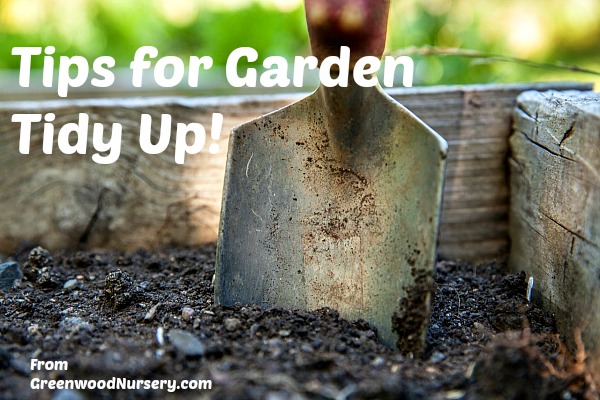Free gardening gloves when you spend $75.00 or more!

Gardeners can be as antsy as Punxsutawney Phil to assume that spring has arrived, when winter may still be hanging on like a crotchety great-uncle who has long since overstayed his welcome. So be careful that you don’t let your itchy green thumb spur you into removing mulches or turning soggy soil before your hard frosts are over. If you do, you may end up with freeze-dried plants and ground which resembles jack-hammered concrete.
Here's some spring cleaning tips that will get your garden ready for warm spring weather.
You can give all your fingers a good workout by pruning your fruit trees and berry bushes, most of which will tolerate being shaped up in late winter and early spring. Their bareness at that season should allow you to more clearly see what you are doing. First, though, you will need to find all your gardening tools and give them a good cleaning and sharpening.
If your pruning shears have been rusting beneath a layer of leaf litter all winter or your spade got run over and broken that time you couldn’t find the snow shovel, you may need to purchase new tools. It’s best to do that before the springing of warm weather clears store shelves and reduces your options.
Once you are sure that Old Man Winter has really departed to afflict the southern half of the globe, you can begin your spring cleaning. After tossing winter debris on your compost pile, turn that heap to discover whether the grass clippings and fallen leaves you added last year have decomposed into fluffy black compost yet. If so, you might want to use it to mulch your plants, since it should help preserve spring moisture and add nutrients.
Provided that your perennials already are growing in good soil, that slow-release feeding may be all the fertilizer that they need. Too much nitrogen often causes excessive foliage growth at the expense of flowers—and also contributes to polluting runoff.
After you’ve removed the burlap coverings from your most tender trees and shrubs, you’ll probably need to cut off some die-back. Spring also is a good time to prune summer-flowering ornamental shrubs, but not a good time to attack the spring-flowering ones—except for removing deadwood—or you will nip their buds in the bud. You also can divide summer-blooming perennials, but should leave the spring-blooming ones alone until after their flowers fade.
If you left the stems of some of your shriveled herbaceous perennials standing over winter to provide seed for the birds, you now can lop them off or mow them down. Most deciduous ornamental grasses also should be pruned back early enough to catch them before new season growth begins.
Finally, you’ll want to dig out your hummingbird feeders and give them a good cleaning while those brave birds are zooming their way north across the Gulf of Mexico. They probably will be ravenous by the time they huff into your back yard. In fact, by the time you finish all these tasks, you may well be huffing along with them!
- cheryl's blog
- Log in or register to post comments







